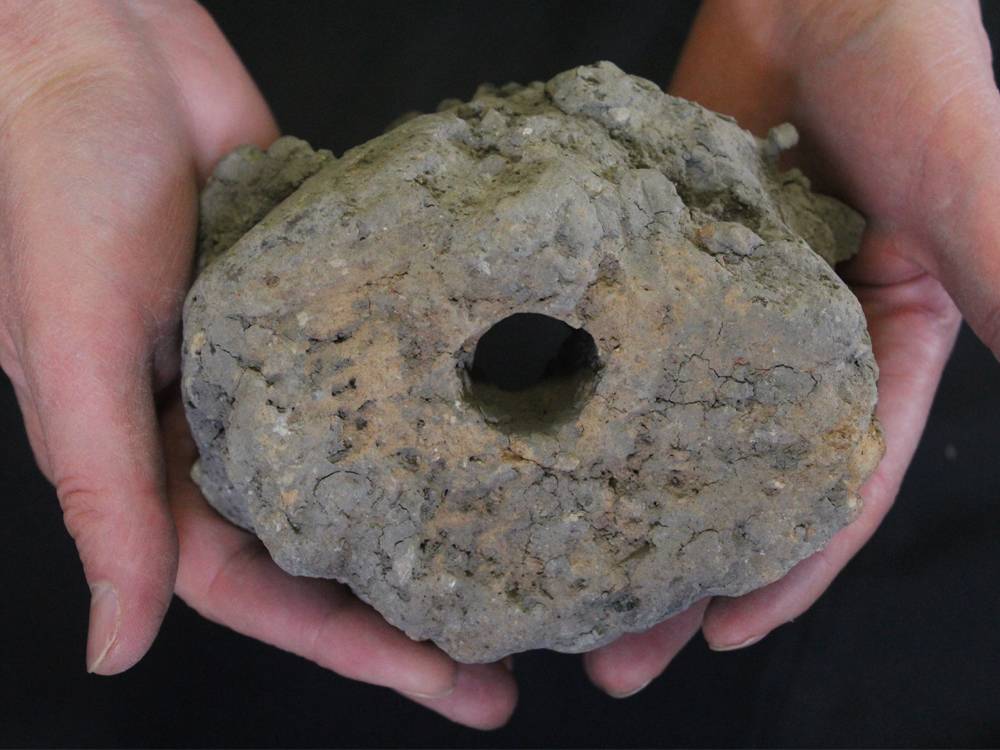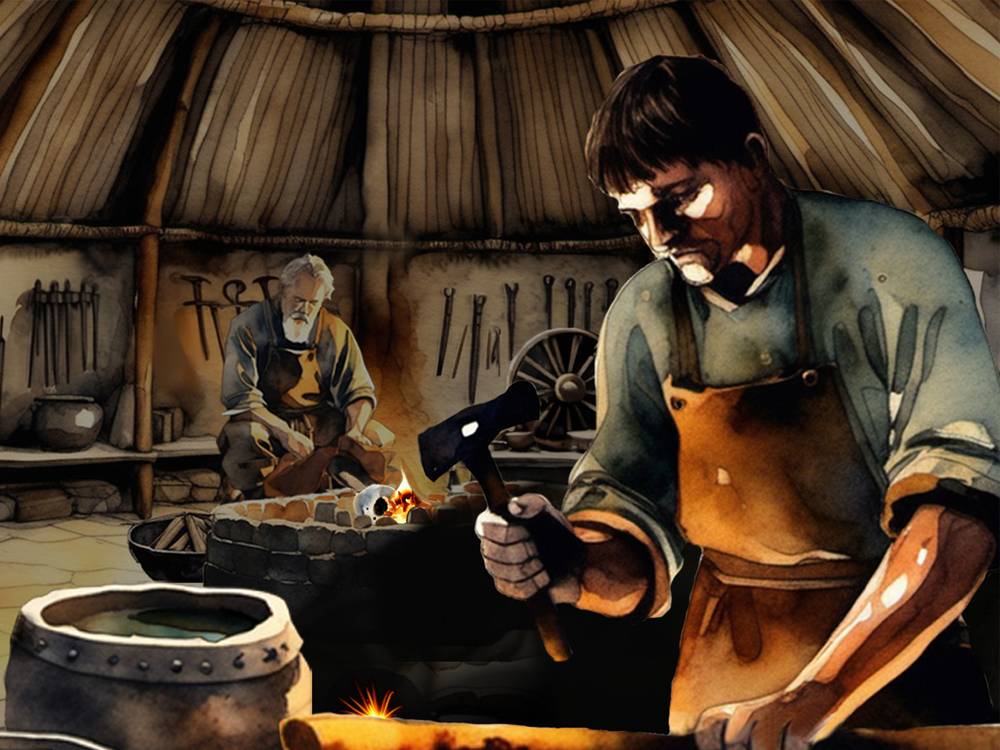Academic, TV presenter and author Alice Roberts tells us about her Crypt theatre show, based on her latest book, which visits Guildford’s G Live and Wycombe Swan this month…
Q: Hello Alice. You’re taking your new show, Crypt on the road. What is it about?
“The show is all about my new book, Crypt, illustrated with lots of great images and packed full of intriguing stories and surprising revelations. I’d like to say it’s an all-singing, all-dancing romp through the worst injuries and diseases of the Middle Ages, but – my audiences will be thankful – there’s no singing and dancing in it. But I can promise plenty of plague, syphilis and leprosy, gruesome murders, archery and sword fights. Crypt is the final instalment in a trilogy that started with my books Ancestors and Buried. It pulls together some of the threads from the first two books but also moves us on in time. Ancestors focused on prehistory, while Buried was about the first millennium: Romans, Anglo Saxons and Vikings. With Crypt, I move into the Middle Ages, but once again I’m looking at how archaeology is being radically transformed by new science, from chemical techniques which allow us to analyse tooth composition and work out where out where somebody grew up, to ancient DNA – where we’ve now entered the era of “archaeogenomics”.
Q: Can you tell me more about why ancient DNA is so exciting?
“Yes – we’re now sequencing entire genomes – in other words the entire set of genetic information contained in an organism. And that’s providing us with all sorts of revelations when it comes to human history – allowing us to trace family relationships between individuals in cemeteries and communal tombs, and to track migration in the past. But the focus in Crypt is on diseases and what this genetic investigation can tell us about them. It’s completely transforming our understanding of how diseases have affected human societies in the past because we’re suddenly able to make definitive diagnoses using DNA – and see how diseases have changed genetically over time, too. During COVID, we used similar techniques – PCR and sequencing – to test for the disease and to track the emergence of new mutations and strains of the virus, and we can do the same with ancient pathogens.”
Q: Does it have any relevance to today?
“Yes, absolutely. It means we can understand the impact of disease on past populations much better – and that’s very useful information for archaeologists and historians, but it also means we understand more about how diseases actually work.”
Q: Do you draw comparisons between disease in the Middle Ages and COVID?
“Not explicitly, but it’s interesting to look at how epidemics and pandemics emerged and spread in the past – and how society responded. You might think that, 500 years on, we’d be dealing with infectious disease very differently – but actually, up until the point we had vaccines, the only protection we had available was similar to what people had in the Middle Ages – quarantining, keeping away from people, wearing a mask.”
Q: Do you look at how diseases were treated in the past?
“Yes – I’m interested not only in how we can use new science to look at old diseases but also the experience of those individuals with diseases – how they were treated by society and the management options available to them. If you had leprosy, for example, there was certainly no curative treatment available but there were hospitals – more like the hospices of today – where you could be cared for.”
Q: What is the genome research you cover in the book and talk about in the show?
“I focus on the exciting 1000 Ancient Genomes Project at the Francis Crick Institute in London, led by Pontus Skoglund – and already generating some incredible results. It’s the most ambitious ancient DNA project in Britain to date. But there’s lots of other genetic research mentioned in the book, too.”
Q: Can you give us an example?
“One really fascinating case is the Justinianic Plague of the sixth century CE. Through DNA research, we now know that the three big pandemics of history – the 19th-century Hong Kong Plague, the 14th-century Black Death and the Justinianic Plague – were all caused by the same pathogen, Yersinia pestis. It’s a great example of how DNA can lead us to a precise diagnosis of diseases in the past – and a sobering lesson about how diseases can lie dormant for centuries, then re-erupt into a pandemic. If we can understand why that happens – that will help us combat disease today.”
“I love campervanning – heading off on adventures, and not necessarily knowing where I’ll end up.”
Q: Do the audience need to be science boffins to follow the things you mention?
“Definitely not. I’m interested in sharing science in a way that’s detailed and interesting but accessible to everyone. That’s not about dumbing down – but just about explaining technical terms and not using impenetrable jargon! I want to open up this amazing science and history – to tell these brilliant stories and reveal secrets – without talking down to people.”
Q: What else happens in the show?
“I can promise a very entertaining evening, which may sound weird to say when it’s about death and disease. There’s a lot of new science, and it really is this collision of science and history that for me is very exciting. There’s also a Q&A with the audience and a book signing afterwards.”
Q: Has an audience member ever asked a question in a Q&A that stumped you?
“Yes, of course! There have been times when I’ve genuinely never thought of a particular question and it’s really exciting to be challenged. I find that with my university teaching too – I love being asked interesting questions. If I can’t answer a question, it means I either have to go away and find out – or if the answer doesn’t exist that could be a whole new avenue for research. And some questions can be more philosophical or ethical – and those questions invite everyone in the audience to form an opinion.”
Q: You’re a qualified doctor, who once treated living patients. Do you think of the skeletons you work on as dead patients, as it were?
“Yes I do. When I’m looking at a skeleton I’m not just looking at a bunch of old bones, I’m very much looking at a person. I’m looking for the traces of that life, written into the bones. It’s a kind of biography.”
Q: You’ve packed a lot into your career – doctor, academic, author, television presenter, artist and now children’s author. Do you have a favourite?
“I enjoy all the strands of my career, and feel very lucky to be exploring ideas I find fascinating in my writing and broadcasting – and sharing those ideas with an enthusiastic audience. The different aspects of my work might seem quite separate, but they all flow together. I started writing because of television, and I started doing television because of my academic work, by writing bone reports on Channel 4’s Time Team, back in the day. I really enjoy the teamwork and camaraderie when I’m making documentaries, but I also enjoy the monastic solitude of writing, and I also love teaching medical students. It sounds like a lot of different things, but they all inform each other and are quite synergistic. I also really enjoy ranging across different disciplines – bringing together ideas from biology and history, genetics and archaeology.”
Q: Will people get to see your art in the show?
“I’ve drawn chapter headings for the new book, so I’ll certainly be sharing those images. I’ve always enjoyed art, but have been making more time to develop new techniques and use new media in recent years, and I’ve recently been made an honorary academician of the Royal West of England Academy. I offer some of my artwork as giclee prints which people can buy via my website.”
Q: What projects are you working on at the moment?
“I’m writing the sequel to my children’s novel Wolf Road, and I’m currently working on a series for History Channel called Royal Autopsy, where we explore the medical histories and causes of death of various monarchs. We’ve already autopsied Elizabeth I and Charles II, and in the new series we’ll delve into the insides of Henry IV, Mary Tudor, Queen Anne and George IV. We interrogate what was written about their deaths at the time, but also approach them with modern eyes. There’s also a new series of Digging for Britain – series eleven – and it will be available on iplayer, of course – where viewers can also catch up with my earlier landmark series such as Ice Age Giants and the Incredible Human Journey. I’ve also got an exciting programme on the Herculaneum scrolls coming soon on Channel 5. And I’m very much hoping to embark on a science podcast soon with my good friend, the geneticist and broadcaster Adam Rutherhood. So I’m keeping myself busy!”
Q: You’re famously part of the campervan community– how did that start?
“It’s all down to the wonderful, late Professor Mick Aston, of the University of Bristol and Time Team fame, who used to have a campervan which he used to drive to filming locations. I bought it from him – it was a very special Type 25 Syncro – and I sprayed it a lurid green! I’m now the proud owner of a slightly younger VW T5 California. I love campervanning – heading off on adventures, and not necessarily knowing where I’ll end up!”
Q: Do you use your camper van when you’re on tour?
“Yes I do – on my last book tour I stayed in some fantastic campsites across the UK. I had a great time touring round northern Ireland and found some really special places to stay in the Yorkshire Dales too. Our ancient ancestors were nomadic hunter-gatherers – perhaps that’s why I love camping so much!”
Buy tickets for Alice Roberts’ CRYPT tour here
Pre-order CRYPT here













